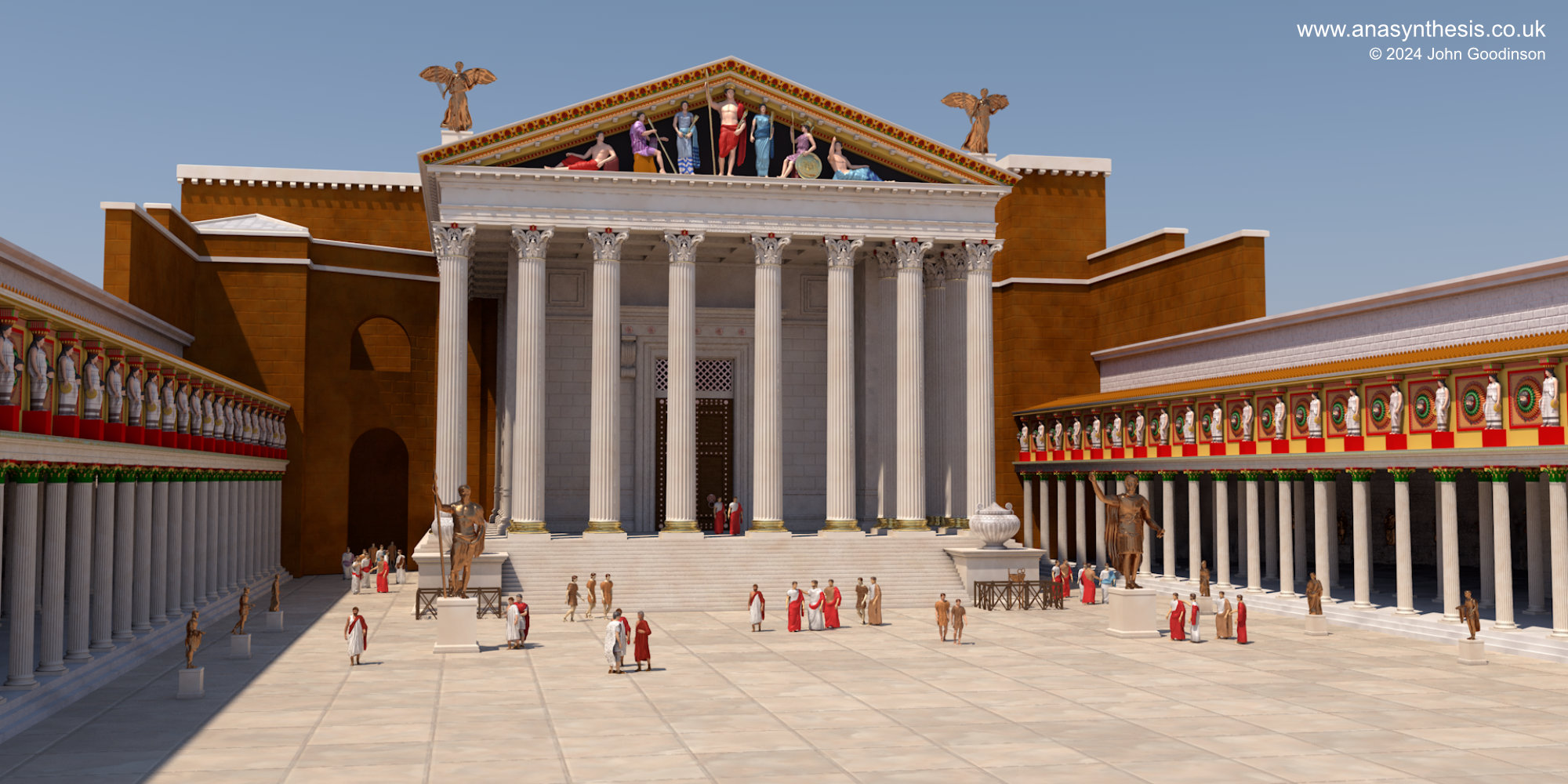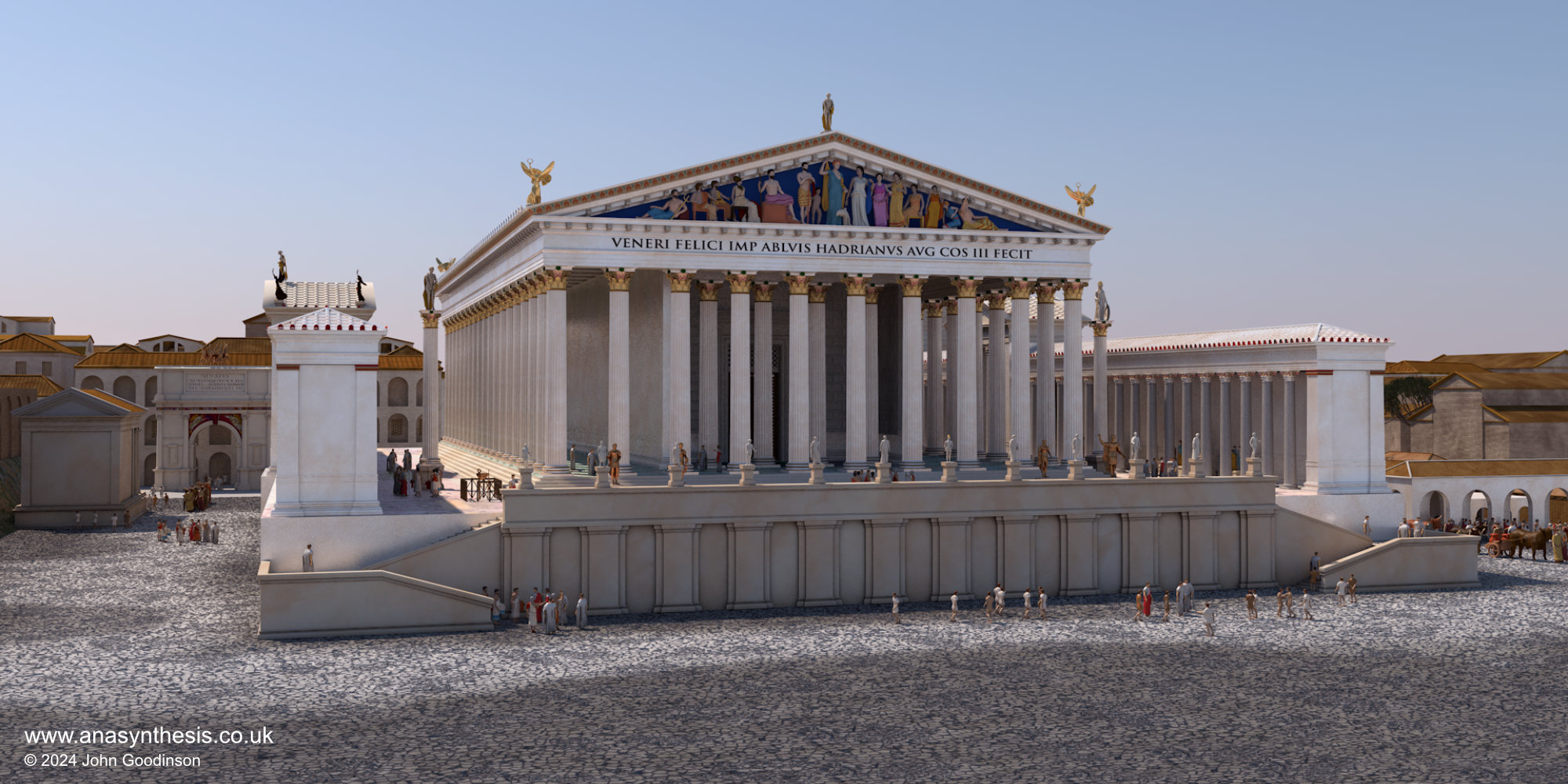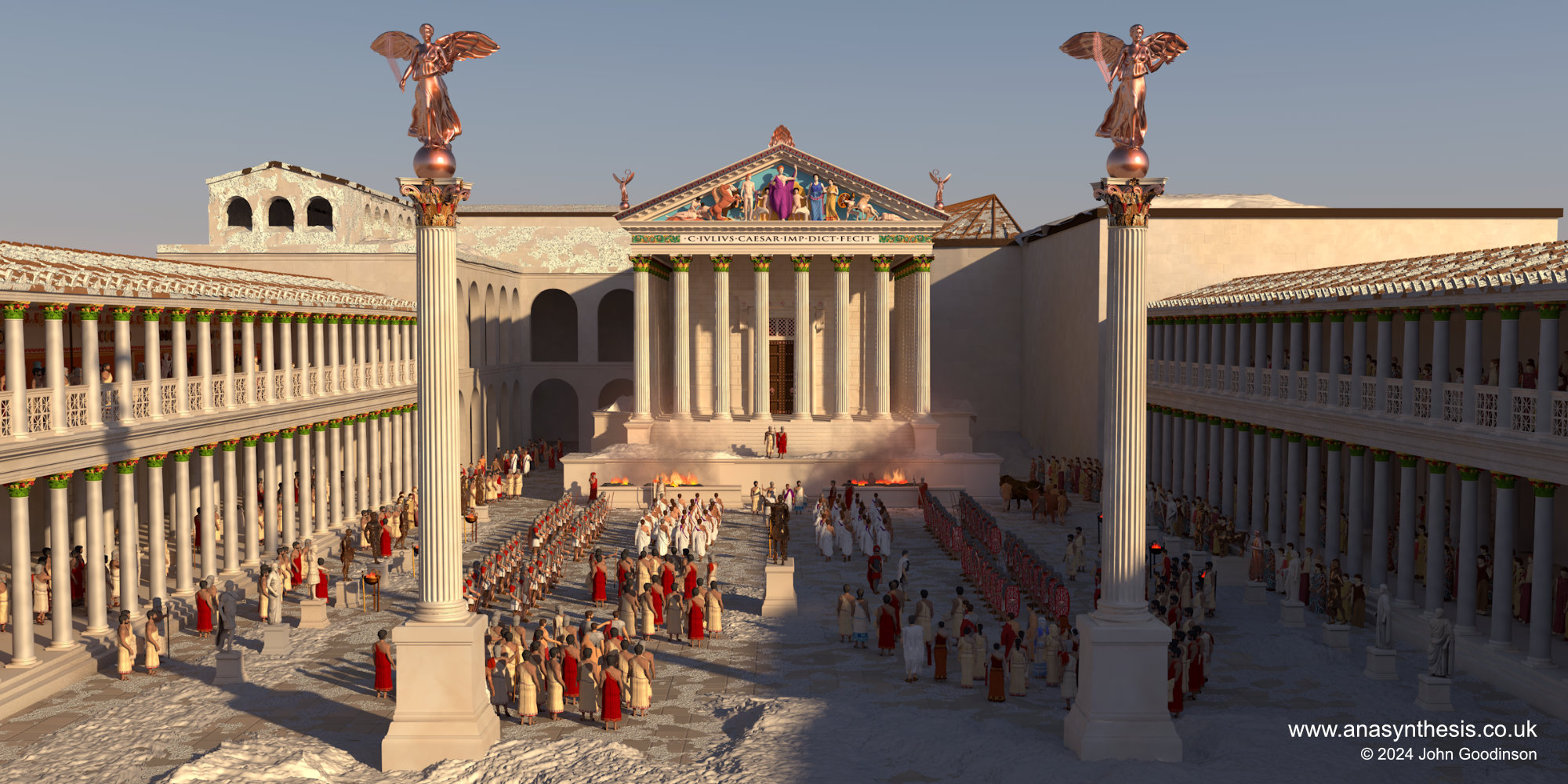From the earliest days of the Republic, the ancient Romans looked to their eastern neighbors in Greece for inspiration. Roman philosophy, drama, art, politics, architecture, and mythology were all deeply intertwined with Hellenic traditions. Even so, despite Roman admiration for all things Greek, the relationship between Rome and Greece was fraught with conflict.
Above: Forum of Augustus. Temple of Mars Ultor.
Beginning in the late third century B.C.E., a series of Roman interventionist actions – the so-called ‘Macedonian Wars’ – saw the forces of Rome clash with Hellenic kingdoms throughout the Mediterranean. These wars culminated in the Battle of Corinth (146 B.C.E.), the Siege of Athens (87/86 B.C.E.), the Battle of Chaeronea (86 B.C.E), and – finally – the Battle of Actium (31 B.C.).
The Battle of Corinth saw the complete subjugation of southern Greece by Roman forces under the General Mummius; the city of Corinth was devastated in toto.
Above: Temple of Venus and Rome.
During the Siege of Athens and the Battle of Chaeronea, the Roman General Sulla decimated the eastern regions of Greece, crushing the rebellious Hellenes once again. Finally, at the Battle of Actium, the young general Octavian (soon to be Augustus) destroyed the forces of the last Hellenistic kingdom that had been marshalled by Antony and Cleopatra.
Interestingly, this near-constant state of war served to fuel the fire of Roman interest for all things Greek. Each time a Greek city was plundered, Greek art, Greek spoils, and Greek wealth passed west into Rome. Additionally, in the first century B.C., Corinth was rebuilt and once again became a major trading hub of the Mediterranean.
Above: Tiber Island, Rome.
Athens, also, rose again to prominence as a center of commerce, art, and philosophy. Later centuries would see this interest in Greece blossom into full-blown ‘philhellenism’ – especially under the emperors Trajan (AD 98-117) and Hadrian (AD 117-138), both of whom admired ancient Greek art, architecture, and philosophy. The Roman poet Horace perfectly captures the spirit of the age when he writes: “Graecia capta ferum victorem cepit et artes intulit agresti Latio,” or “Conquered Greece took captive her savage conqueror and brought her arts into rustic Latium.”
Above: forum of Julius Caesar. Temple of Venus Genetrix.
Of course, one of the most important Greek imports – both in terms of art and war – was the figure of nikē or, for the Romans, victoria. In between the second century B.C.E. and the second century A.D., as it became clear that the goddess of victory had chosen her new champion, veritable flocks of nikē descended to grace the porticoes, temples, pedestals, forums, and other civic buildings of the Eternal City. After hundreds of years of incessant war,
Nike had finally come home.


